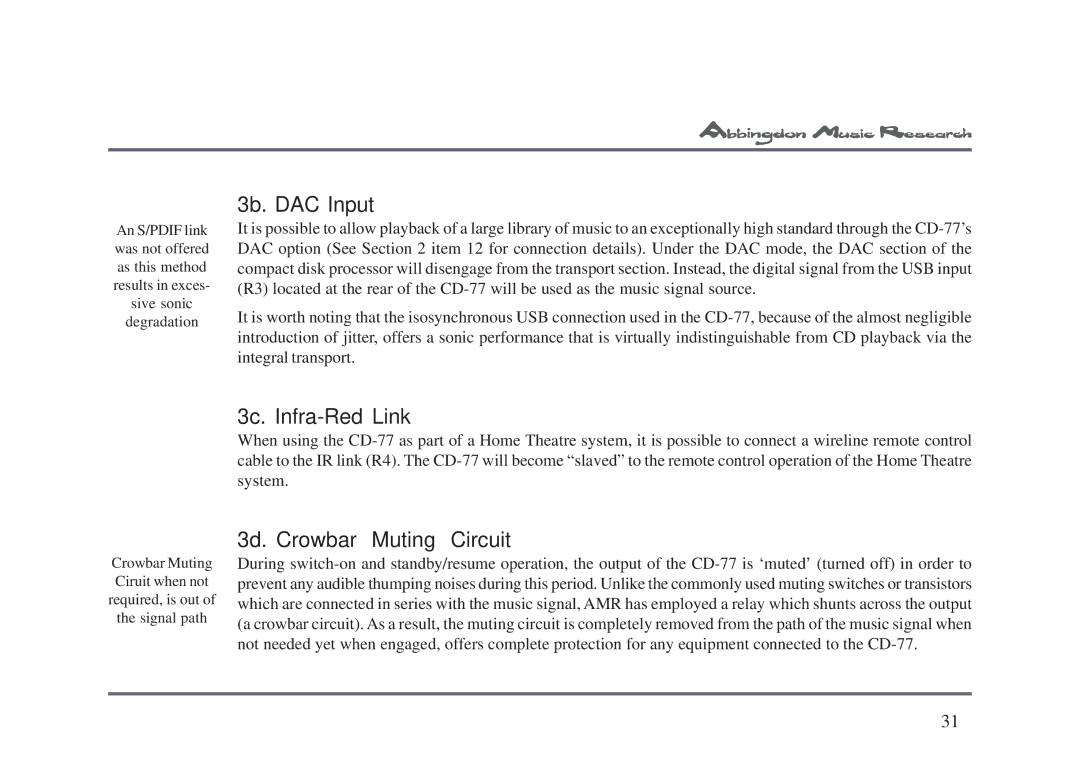
An S/PDIF link was not offered as this method results in exces- sive sonic degradation
3b. DAC Input
It is possible to allow playback of a large library of music to an exceptionally high standard through the
It is worth noting that the isosynchronous USB connection used in the
Crowbar Muting Ciruit when not required, is out of the signal path
3c. Infra-Red Link
When using the
3d. Crowbar ‘Muting’ Circuit
During
31
